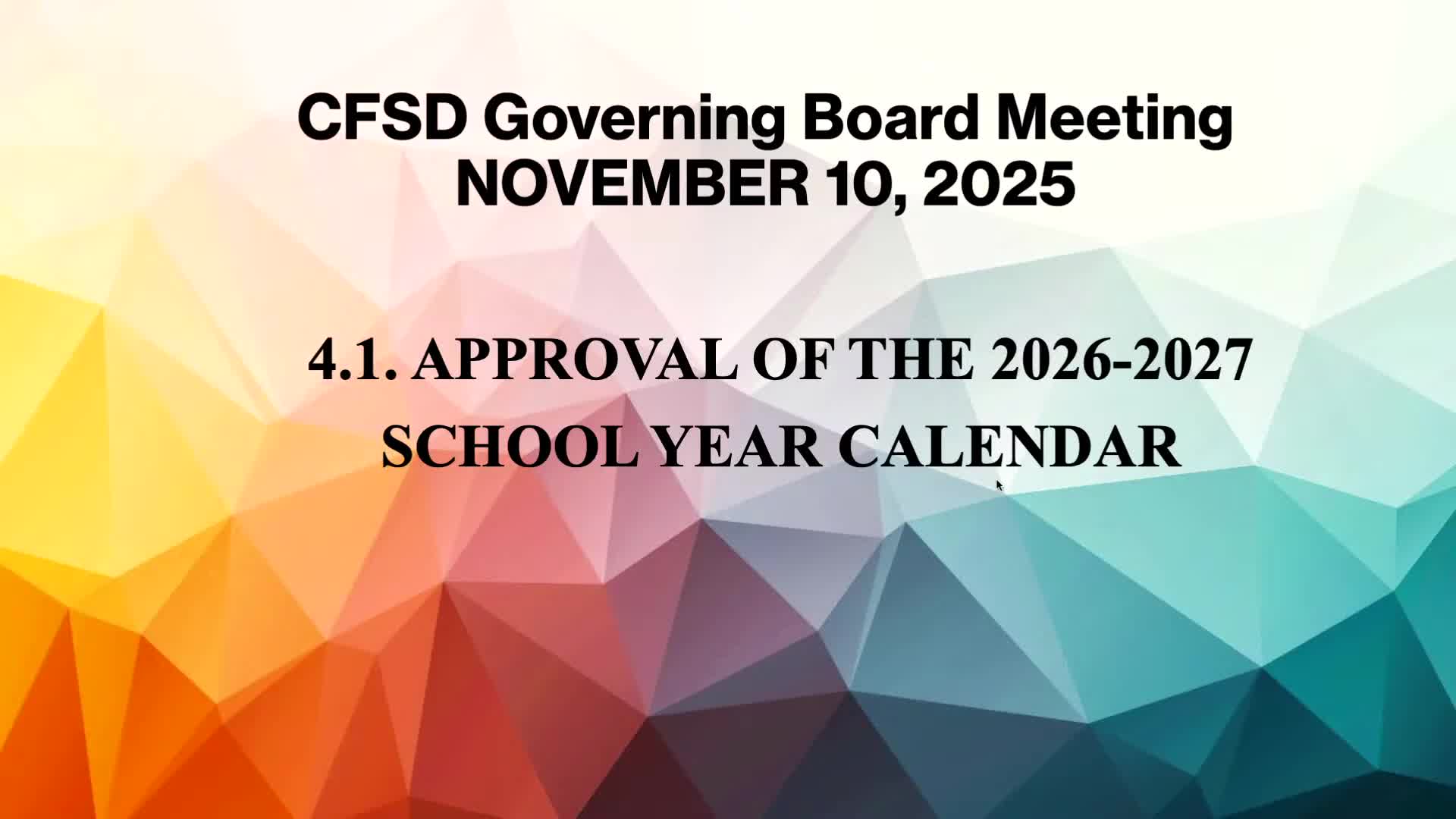District data director: CFSD maintains all A’s under Arizona A–F system; chronic absenteeism reduces proficiency
November 11, 2025 | Catalina Foothills Unified School District, School Districts, Arizona
This article was created by AI summarizing key points discussed. AI makes mistakes, so for full details and context, please refer to the video of the full meeting. Please report any errors so we can fix them. Report an error »

Justin Robinson, the district’s director of student data, gave a detailed presentation on Catalina Foothills Unified School District student assessments and Arizona’s A–F accountability framework at the Nov. 10 board meeting.
Robinson walked the board through state achievement assessments for science, math and English language arts, cohort-based growth measures, EL proficiency (AZELLA/ALT-ELPA), and high-school measures including ACT, ACT Aspire, PSAT, STAMP and AP results. He reported the district’s average proficiency on several core assessments has been “stagnant” in places (about 57% in some subjects) while growth measures show pockets of improvement for select subgroups, notably students with disabilities and income-eligible students.
On English learners, Robinson explained how AZELLA counts change as students test proficient and exit the EL cohort, making trend interpretation volatile. He recommended continued monitoring of students for two to four years after exit to ensure progress in other state achievement measures.
Robinson reported the district’s high school outperforms national averages on ACT composites and that cohort-level ACT Aspire-to-ACT growth appears to reflect curricular shifts (e.g., math program changes). He also presented AP participation and performance trends and noted the district expects roughly 1,400–1,450 AP exams administered this school year.
A major focus was chronic absenteeism: Robinson said approximately 472 of an estimated 2,800 grades 1–8 students were chronically absent (defined as missing more than 10% of the year, roughly 18 days). He presented comparative outcomes showing a 68% passing rate among non-chronically-absent students versus a 47% passing rate for chronically absent students, and said chronically absent students accounted for about 25% of failed AASA ELA and math tests. "You're 31% less likely to pass if you're chronically absent," Robinson said.
Robinson reviewed how the A–F system weights proficiency, growth, EL performance and acceleration/CCR indicators. He noted Ventana Vista received a perfect proficiency component score in the current calculation and that every CFSD site fell within the A range this year, making CFSD one of the few districts with all sites earning A’s. He cautioned that the state may move to indicator-level letter grades in the future, which would change how these results are reported.
Board members asked clarifying questions about cohort methodology, growth calculations, the effects of moving students between grades and schools, and data-cleaning practices for graduation cohorts. Robinson described ongoing data-cleaning and verification efforts and said counselors and registrars work with central data staff to ensure accuracy.
The presentation closed with Robinson and board members noting the role of data access at school and teacher levels for targeting interventions and for tracking postsecondary and CCRI bonus-point measures. No formal action was required for this report.
Robinson walked the board through state achievement assessments for science, math and English language arts, cohort-based growth measures, EL proficiency (AZELLA/ALT-ELPA), and high-school measures including ACT, ACT Aspire, PSAT, STAMP and AP results. He reported the district’s average proficiency on several core assessments has been “stagnant” in places (about 57% in some subjects) while growth measures show pockets of improvement for select subgroups, notably students with disabilities and income-eligible students.
On English learners, Robinson explained how AZELLA counts change as students test proficient and exit the EL cohort, making trend interpretation volatile. He recommended continued monitoring of students for two to four years after exit to ensure progress in other state achievement measures.
Robinson reported the district’s high school outperforms national averages on ACT composites and that cohort-level ACT Aspire-to-ACT growth appears to reflect curricular shifts (e.g., math program changes). He also presented AP participation and performance trends and noted the district expects roughly 1,400–1,450 AP exams administered this school year.
A major focus was chronic absenteeism: Robinson said approximately 472 of an estimated 2,800 grades 1–8 students were chronically absent (defined as missing more than 10% of the year, roughly 18 days). He presented comparative outcomes showing a 68% passing rate among non-chronically-absent students versus a 47% passing rate for chronically absent students, and said chronically absent students accounted for about 25% of failed AASA ELA and math tests. "You're 31% less likely to pass if you're chronically absent," Robinson said.
Robinson reviewed how the A–F system weights proficiency, growth, EL performance and acceleration/CCR indicators. He noted Ventana Vista received a perfect proficiency component score in the current calculation and that every CFSD site fell within the A range this year, making CFSD one of the few districts with all sites earning A’s. He cautioned that the state may move to indicator-level letter grades in the future, which would change how these results are reported.
Board members asked clarifying questions about cohort methodology, growth calculations, the effects of moving students between grades and schools, and data-cleaning practices for graduation cohorts. Robinson described ongoing data-cleaning and verification efforts and said counselors and registrars work with central data staff to ensure accuracy.
The presentation closed with Robinson and board members noting the role of data access at school and teacher levels for targeting interventions and for tracking postsecondary and CCRI bonus-point measures. No formal action was required for this report.
View the Full Meeting & All Its Details
This article offers just a summary. Unlock complete video, transcripts, and insights as a Founder Member.
✓
Watch full, unedited meeting videos
✓
Search every word spoken in unlimited transcripts
✓
AI summaries & real-time alerts (all government levels)
✓
Permanent access to expanding government content
30-day money-back guarantee

